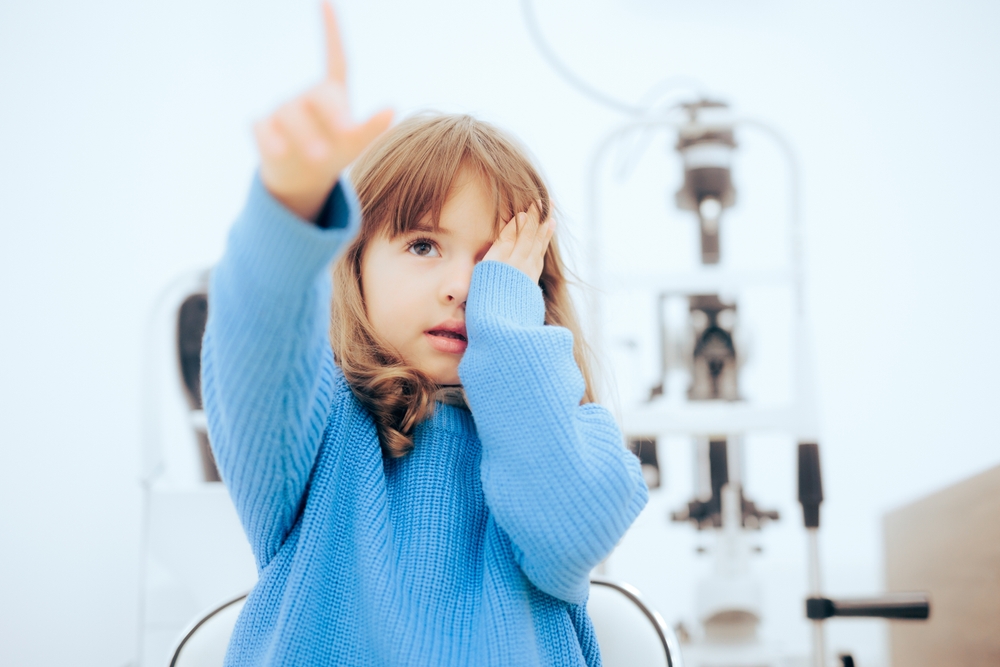
Nearsightedness, or myopia, is becoming more common, especially in school-age kids. New eyeglasses and contact lenses use creative designs to slow down how fast nearsightedness worsens. The best new approaches combine multiple techniques for better impact. Used consistently, these modern solutions help young eyes keep clearer vision for longer.
Low-Dose Atropine Eye Drops
Using low-dose atropine eye drops is popular for treating nearsightedness. Doctors used to prescribe 0.01% atropine drops. They thought that concentration was safest. However, studies show that 0.05% works better. It slows changes in nearsightedness and eye length more. And it has little to no side effects.
Age matters for how well low-dose atropine works. Kids ages four to 12 need 0.05% drops. That concentration gives the most reduction in worsening nearsightedness.
Overnight Contact Lenses
Special contact lenses worn at night reshape the cornea. This is called orthokeratology or ortho-k. Recent research shows ortho-k controls nearsightedness well. It is affordable, with lenses lasting about one year. Ortho-k lenses reshape the cornea to slow growth on the edges. This lets you see clearly all day without glasses or contacts. The lenses cause your eyes to stop excessive growth.
Multifocal Contacts
Multifocal contact lenses are great for managing nearsightedness. One called MiSight helps slow progression in kids. It has a unique dual-focus design, creating a stronger treatment zone. Studies show MiSight beats regular contacts. It reduced worsening vision by 60% and slowed eye growth by 52%.
Extended Depth of Focus Contacts
Some contacts give clear vision at all distances. Brands like NaturalVue and Mylo work to control nearsightedness. These lenses take some getting used to, but they also slow progression in children. Curently, more research on this product is underway, and costs differ by brand and where you live.
Distance-Focused Lenses
Lenses focused on distance vision help slow vision and eye length changes. Research shows they can reduce worsening nearsightedness by 50%. Biofinity MF lenses are affordable and easy to get, making them popular. But some patients may prefer to avoid wearing disposable monthly lenses.
Nearsightedness Control Glasses
New eyeglass lenses can control nearsightedness. Studies show their designs help slow myopia progression. They work by relaxing the eyes' focusing efforts. This helps stop nearsightedness from worsening quickly.
Examples are Myopilux by Essilor and MyoVision by Zeiss. Eye doctors often recommend these glasses if your child has a family history of nearsightedness. Researchers keep inventing new practical and comfy myopia control lenses.
Combination Treatments
Using combined approaches provides enhanced control. For example, you can use ortho-k lenses with low-dose atropine drops and add part-time glasses or contacts. This gives young eyes the best chance of maintaining good vision longer. Lenses at night reshape the cornea. Drops and daytime glasses relax eye-focusing issues. Together, they maximize the slowing effects.
Outdoor Time
Research also shows spending time outdoors helps. Sunlight triggers chemical changes in the eye. This puts the brakes on excessive eye growth. So, kids should play outside as much as possible. Schools can also hold more classes outdoors or rotate kids between classrooms with sunlight. Creative ways to increase outdoor exposure aim to curb the myopia epidemic.
See an Eye Doctor
Many treatments today slow nearsightedness. Eye doctors pick the right approach for each patient’s age and eye health. They stay up-to-date on the latest research and options. To learn more about controlling nearsightedness, visit an ophthalmologist. They can help safeguard your child’s vision for the long term.
For more advancements in myopia treatment or to book a visit, call Northside Vision at (509) 519-4400 to reach our office in Spokane, Washington.








